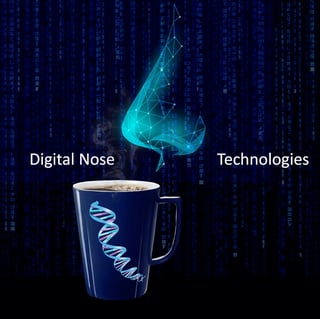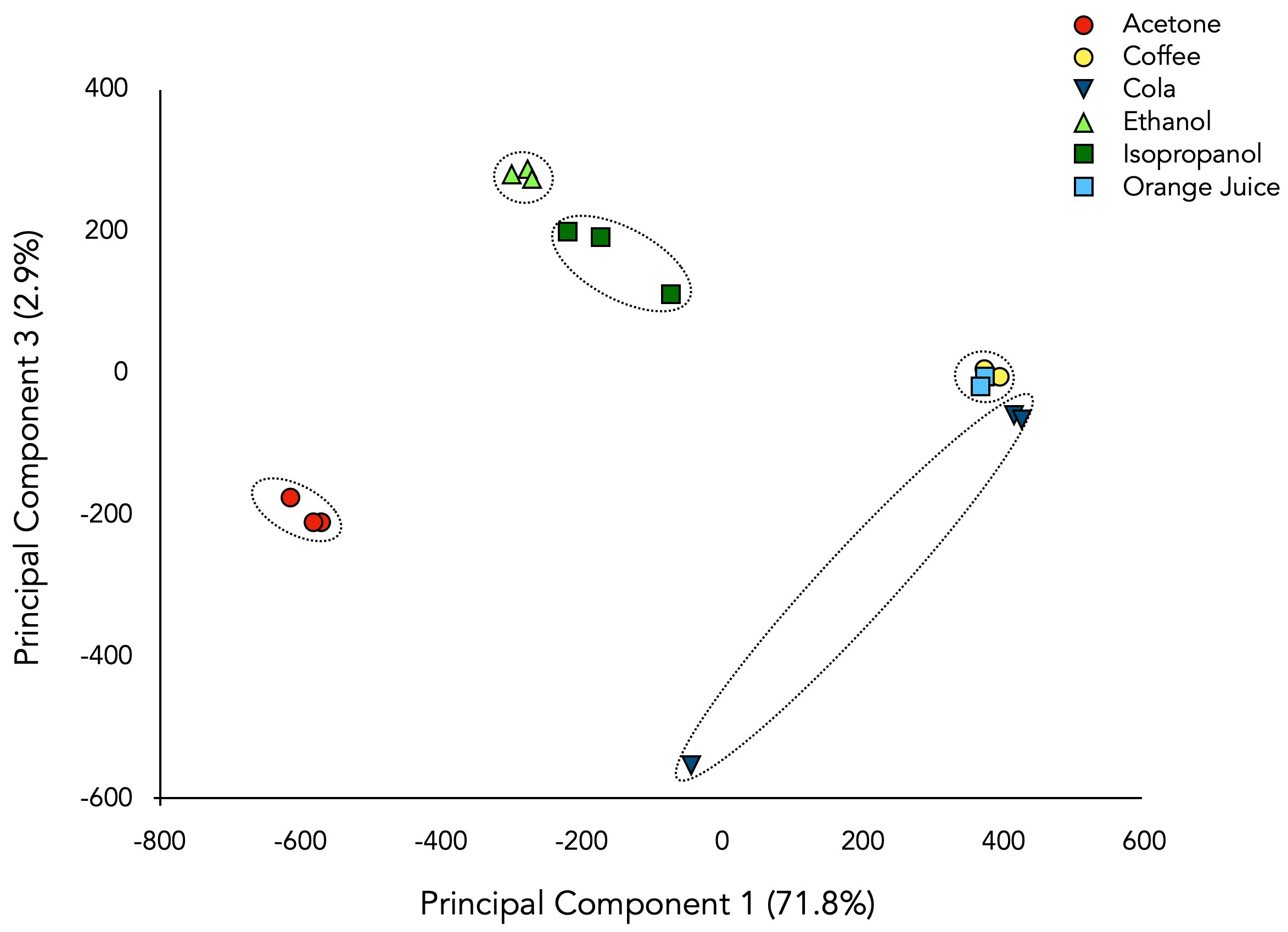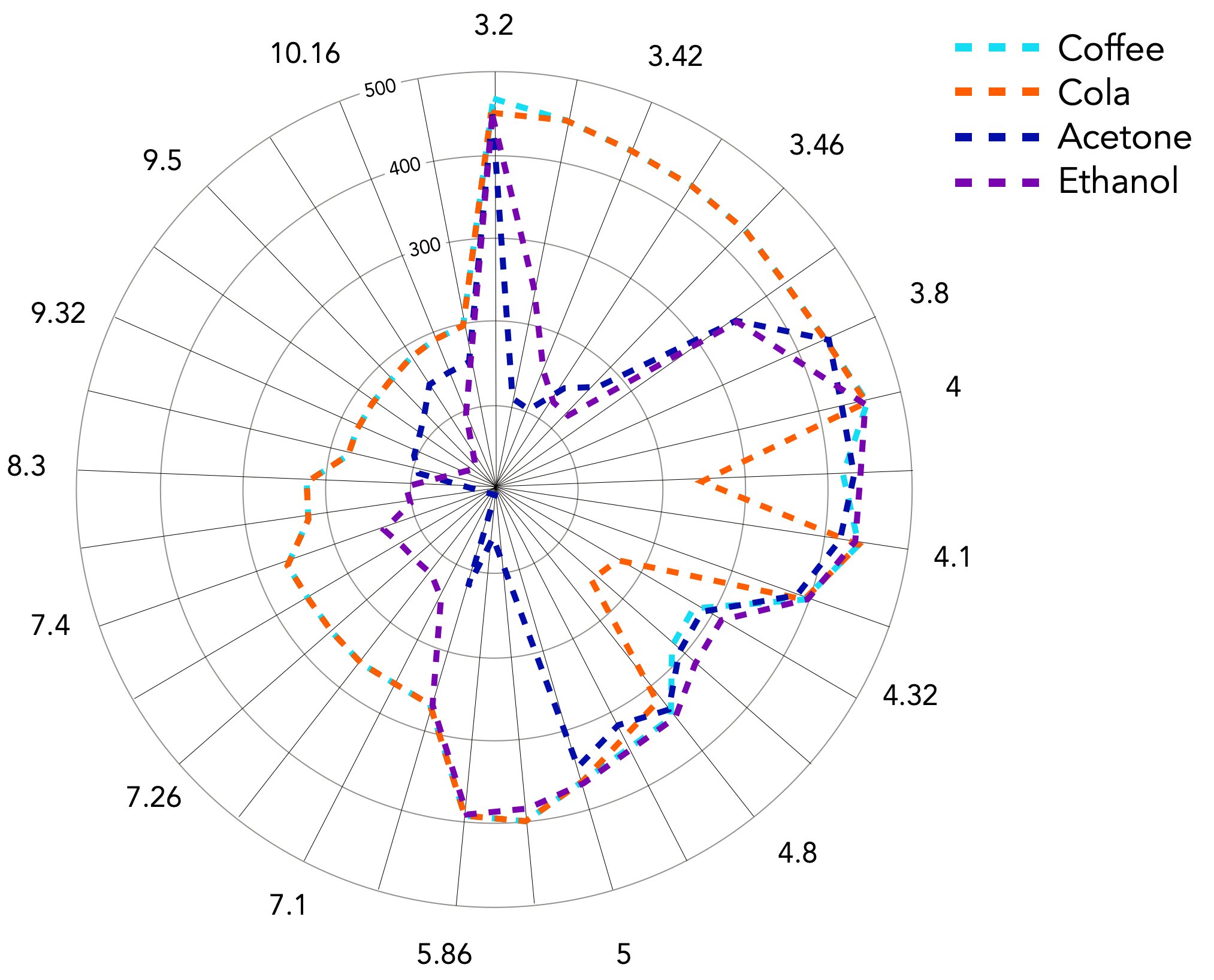In earlier blogs we considered new technologies that utilize light in the advance of health care, and the various challenges these represent in terms of device construction and integration. We complement that study here by undertaking a similar investigation, but referencing olfactory sensors, “electronic noses” or EN. The latter typically employs an array of sensors with overlapping sensitivities to create an olfactory map, then subjects it to some form of computational pattern recognition analysis, such as we represent in Figure 1 below. What this process offers is the ability to detect volatile biomarkers in exhaled breath (as indeed, equally from urine, sweat and blood) and map-out the presence of various diseases through key elements present in their chemical signatures. The outcome is a means to provide a simple, quick, effective, accurate, and non-invasive means of diagnosis, from cancers and cardio-respiratory, to asthma and eye infections.

While providing us with a glimpse of the potentials represented by the technology, simultaneously, it underscores a series of deficiencies that need to be resolved through on-going development. Problems that need to be solved if devices are to be adopted in widespread clinical use. The challenges, while including physical design, construction and packaging of the critical systems, more importantly, center on writing the required software to bring coherence to data results. Most important of all, is the need for standardization. This is essential if devices are to be productized and manufactured in volume. The still-to-be-done work ranges from overcoming some of the disadvantages represented by established gas-based sensor devices (such as lifespan and substance selectivity) to challenges in cost and miniaturization for more advanced optic-based EN sensors. The greatest breakthrough, however, will come with the application of AI as only this can successfully create the needed accuracy in the face of a complex data field of the kind present in multi-sensor arrays.
 |
 |
Figure 1. Simplified Schematic Representing Olfactory Pattern Recognition - Figure 1 right-hand shows a radar plot of the raw sensors’ responses at different wavelength for different chemicals. The left-hand diagram applies component analysis to chemicals known as biomarkers for the different diseases noted in our introduction. While even a simple system is able to separate more complex vapors at levels of ppm (parts per million), as noted below, some medical grade devices must be at least ten-times to one-hundred more sensitive.
Given the very large number of potential methods in advancing the technology, we restrict our consideration to the opportunities represented by optic-based devices, since these are both superior in potential, and because Palomar has a long history in optoelectronic device development. This extends to opto-microelectronic packaging in general, but especially the hybrid integration of photonic integrated circuits (PICs).
While PIC device development is critical to those applications requiring real-time monitoring of bio-molecular events, the packaging and manufacturing benefits that come from hybrid PIC construction as a whole, extend to the entire ecosystem, allowing, as they do, a universal ramp-up in capability, reduction in size, increased flexibility, significant cost reductions, and thus, widened application ubiquity. Collectively the amount of work needed to secure solutions in each case, is more than justified by a future market with an estimated potential worth of $8-10 billion by 2032, a figure significantly exceeded by reduced medical costs and overall people benefits flowing from easy, early and accurate testing.
If this ramp-up still lies in the future, the learning curve will provide a raft of opportunities for new entrants and innovative players. Breathomics is an emerging science in diagnosis, and, as we have implied, in many areas a technology still in its infancy. That having been said, a number of very practical prototype devices are already in use. These include hand-held products designed to detect tuberculosis for point of care delivery, to the detection of six or more cancers to a range of congenital and viral diseases. With the pandemic, PIC based devices quickly became important in accurate and swiftly detecting COVID antigens. Yet, as we have said, much work still remains to be done in attaining the level of sensitivities needed for widespread device use in clinical practice. The following paragraph will show further light on what this means practically.
As with so many inventions, the digital nose is human science’ attempt to identify, emulate and better nature herself. From time immemorial, mankind has successfully used smell in hunting and tracking, or rather that of his canine companions. Building on this, trials were undertaken in the 1980s by which dogs were trained to spot otherwise difficult-to-detect-early-on diseases. Cancers especially, both because they are so evasive in their early stages, but also because tumors produce VOCs (volatile organic compounds) which even in minute quantities produce a distinct and, for that reason, once defined, an easy to identify odor.
In a 2021 study, dogs correctly identified 41 out of 42 cases of lung cancer in a blind study that included 200 healthy controls. This represented a 97.6% detection rate. Canine ability to differentiate scents is 100,000 more acute than in human beings, even more amazing is that they are able to identify volatile organic compounds (VOCs) with as little concentration of 1 part per trillion. These various figures not only represent the kind of metrics expected of the digital nose, but mark one of the areas where much work still needs to be done—but is constrained by the fact that this can only be accomplished through actual and extensive clinical trials.
As is true across the entire sensor ecosystem, it is not more complex physical devices that are needed, but AI and advanced machine learning. In the automotive and autonomous ecosystems breakthroughs at a compute level are already having a tectonic impact by creating advanced sensor systems but utilizing more basic and less complex components, and so relatively less costly, and easier to package devices. This is precisely what is anticipated as regards EN products; greater and more sophisticated computing power can keep robust pattern information in its raw format, while getting better at removing redundancy and noise and filling in missing gaps, but above all, using disparate types of information from many sensor sources (not just EN) to create a more comprehensive and accurate health picture of the patient. This includes, for example, the ability to combine data from olfactory, optical, sonic-based and other sources to arrive at a more holistic diagnostic conclusion.
While this blog has focused on medical diagnostics, the technology holds out the hope of a varied and practical range of applications that will literally revolutionize the way we live, especially following the expansion of capabilities through miniaturized sensors, including the development of printed organic semiconductors (carbon nanotubes). The latter will offer exceptional performance and ultra-miniaturization embedding in smartphones, wearable devices, certainly aiding provision in the developing world. With structural shifts in food and energy supply increasingly embedded in geopolitics, and ecological and health issues staying at the top of the political agenda, the next few years will mark a global paradigm shift accepting that easy and quick solutions must yield to the up-hill struggle of meeting these challenges despite trials in cost and perseverance.
In regards to photonic based devices, the latter relate principally to the issue of packaging costs, by which is meant the journey to integrate multiple photonic functions onto a single chip in a compact, cheap and functional way. In other words, the design and process obstacles on the way to volume manufacturing.
In the real world these cannot be easily circumvented, invention is hard for a reason, it is trying to bring order to a fragmented set of practicalities, heightened by the realities of intense competition and thus the highly limited sharing of knowledge. PIC-based biosensors are at a threshold of innovation and opportunity. While not a short-cut in this respect, Palomar’s global Innovation Centers are at least a potentially valuable bridge. The knowledge base built up over more than 15 years in developing silicon-based photonic integrated circuits, together with how this has fed into our collective intuition and machine system applications, are all at our customer’s disposal in realizing their ideas, especially in the prototype to early manufacturing stage.
We will deal more deeply with these in subsequent blogs.
----
Dr. Anthony O'Sullivan
Strategic Market Research Specialist
Palomar Technologies